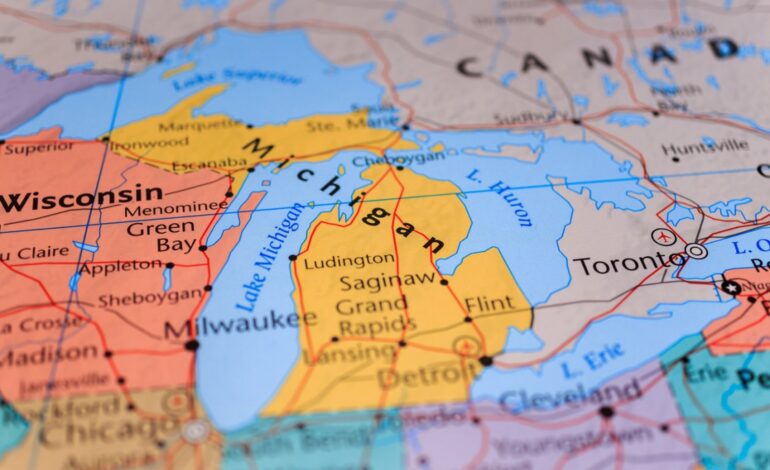The state’s citizen-led, bipartisan Redistricting Commission has adopted its final versions of political maps by the expected timeline.
Although experts are now anticipating legal challenges to the maps, residents at least get a good glimpse into how they could be represented in state House and Senate seats as well as the important Congressional seats in Washington D.C.
After months of public hearings, map drawing and deliberations, the Michigan Independent Citizens Redistricting Commission adopted three plans Tuesday for the voting districts that will govern Michigan’s 13 congressional districts, 38 state Senate seats and 110 state House seats for the next 10 years.
Those plans can be seen at the Commission’s website at michigan.gov/micrc/ under the “Final Maps” button on the front page.
“The new maps are the culmination of years of work, driven by millions of Michiganders from all walks of life,” said Michigan Secretary of State Jocelyn Benson. “They advocated fiercely to give citizens the power to draw their own district lines and made their voices heard throughout the entire process.”
As expected, the new maps will be shuffling around local and Congressional representatives, landing some in new territories, and one U.S. House seat will have two incumbents competing to keep their jobs.
Michigan is set to lose a Congressional seat due to an overall population drop recorded by the 2020 Census.
For the Dearborn area, the new maps mean a notable change. The previously large 12th District encompassing Dearborn and part of Dearborn Heights, represented by U.S. Rep. Debbie Dingell (D-Dearborn), has now been cut to encompass western Wayne County communities and Southfield, with Ann Arbor and Ypsilanti and surrounding towns enveloped into a new Sixth District.
Faced with a choice, Dingell announced she will run for that new district in this year’s elections, giving minority representatives a chance to serve the Dearborn and Detroit area’s “voting rights district.”
“It has long been clear that Dearborn would be incorporated into a voting rights district with communities in Detroit and I have always believed representation matters, so I will not run in a VR district,” Dingell said on Tuesday.

Dingell, who has long been associated with Dearborn, said the decision came with “mixed and complicated emotions.”
Her reference to voting rights comes from the federal Voting Rights Act, which aims to ensure minority populations aren’t left out of political representation due to voting laws, practices and districting.
The Michigan Department of Civil Rights (MDCR) has repeatedly said the new lines violate those standards.
“As the Michigan Civil Rights Commission detailed in their November 22 resolution, and as we outlined in our analysis and in our direct testimony at hearings across the state, the maps the Redistricting Commission developed and voted to adopt will dilute minority voting strength,” said John E. Johnson, Jr., MDCR’s executive director. “It is deeply concerning that a public body in 2021, despite overwhelming input from experts, academics and the citizens who will be directly impacted by their decisions, endorsed maps that do not meet this vital legal and ethical test. The Commission will review this outcome and consider what next steps it will take.”
For Districts 12 and 13 (Detroit, Hamtramck, Downriver cities), their political futures seems to center now on U.S. Reps. Rashida Tlaib (D-Detroit) and Brenda Lawrence (D-Southfield), neither of whom have announced which district they will run for.
Both are popular incumbents for their current districts, but the addition of Dearborn to a district encompassing Southfield could prove a particular challenge for Lawrence for several reasons, including her continued approval of U.S. monetary support for the illegal occupation in Palestine. Lawrence currently also represents Hamtramck, which is absorbed into District 13 with Detroit, meaning if Tlaib does decide to run for that district and wins, she will be representing the concentrated Yemeni American community there.
Another scenario could have an Arab American challenger rising in the next election to represent the Dearborn area in the U.S. Congress.
The State Senate seat looks particularly cohesive for the Arab American communities in Dearborn and Dearborn Heights, both lumped into one district. State House lines do separate these communities, but that could mean the chance for up to three popular representatives to run.
The state is slated to hold a special election to fill House vacancies early next year. This will include the vacated seat of Dearborn Mayor-elect Abdullah Hammoud.
Legal challenges to the new district maps are expected to be filed in coming days, indicating a solid picture of the state’s political maps could be tied up in the courts.
The Commission now must publish maps along with data and reference materials used to draw them within 30 days after adopting them. The map becomes law 60 days after its publication.






Leave a Reply